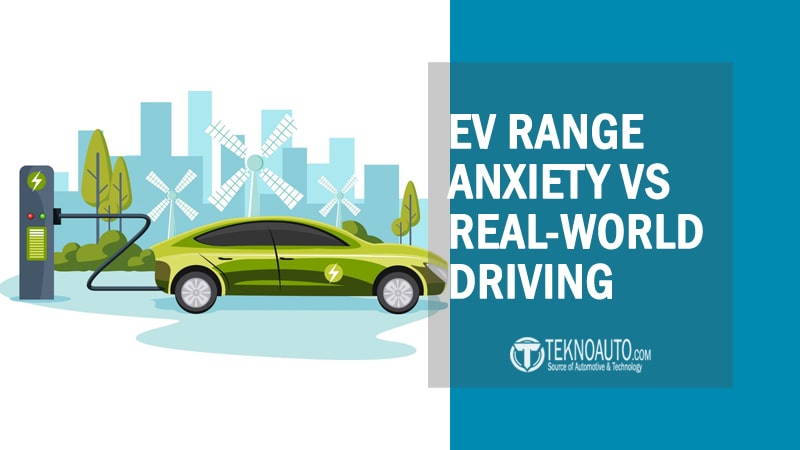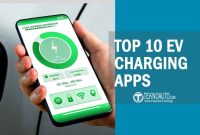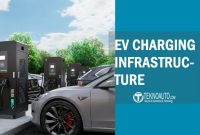When people talk about electric vehicles (EVs), one fear still dominates the conversation: range anxiety. The thought of running out of battery far from a charging station continues to shape how drivers view the practicality of going electric. But how real is this fear in 2025? Are EVs still too limited in range, or are we holding onto outdated assumptions?
EV range anxiety, while once a valid concern, may no longer reflect today’s electric driving reality. With massive improvements in battery efficiency, the rapid expansion of charging networks, and smarter range estimation technology, the way we drive—and think about EV range—has fundamentally changed.
In this article, we dive deep into what the data says about real-world EV performance. We’ll compare official range ratings with actual driving tests, explore what owners report after months behind the wheel, and examine whether modern range anxiety is rooted in fact or just psychological leftovers from the early EV days.
If you’re still on the fence about switching to electric because you’re worried it won’t take you far enough, this is the truth check you’ve been waiting for.
Understanding EV Range Anxiety in Context
What Is EV Range Anxiety and Why Does It Exist?
EV range anxiety refers to the fear that an electric vehicle will run out of battery before reaching a charging station. It’s a psychological barrier that causes many potential EV buyers to hesitate—worried they might get stranded without power. Unlike internal combustion engine (ICE) cars, which can be refueled quickly and almost anywhere, EVs still rely on access to compatible charging points, making energy availability feel more uncertain.
But what’s important to note is that range anxiety isn’t always about actual limitations—it’s often about perception. A large portion of drivers rarely travel more than 40–50 miles a day, well within the range of even the most modest EVs on the market. The fear, then, stems less from experience and more from assumption.
Origins of the Fear: Legacy from Early EVs
Back in the early 2010s, when models like the Nissan Leaf first hit the market, real-world range was limited—often less than 100 miles per charge. At the time, public charging infrastructure was sparse, and battery degradation was a major concern. These early experiences laid the foundation for what we now call range anxiety.
Even as technology advanced, this fear remained embedded in the public consciousness. Many consumers still remember when driving an EV meant planning routes obsessively, checking battery levels constantly, and hoping the next charger wasn’t broken or occupied.
The Role of Media and Public Perception
Media coverage hasn’t always helped. Sensational stories of stranded EV drivers or exaggerated headlines about “range failures” have kept fear alive. While most EV owners today report seamless experiences, negative anecdotes often dominate the narrative—especially on social media, where misinformation spreads quickly.
Additionally, automakers’ own marketing has sometimes contributed to confusion, with optimistic range claims that don’t always align with real-world conditions. This mismatch fuels distrust and leaves potential buyers uncertain about what to expect.
2025: Is the Anxiety Still Relevant Today?
So, is EV range anxiety still valid in 2025? From a purely technical standpoint, the answer is increasingly no. Most modern EVs offer 250–400+ miles of range per charge, and ultra-fast chargers can add 100+ miles in under 15 minutes. For the average daily driver, this is more than enough.
However, range anxiety lingers—especially among new or potential EV users. It’s no longer a question of whether EVs can go the distance. It’s about whether people trust them to do so.
Rated Range vs Real-World Range: The Core Disconnect
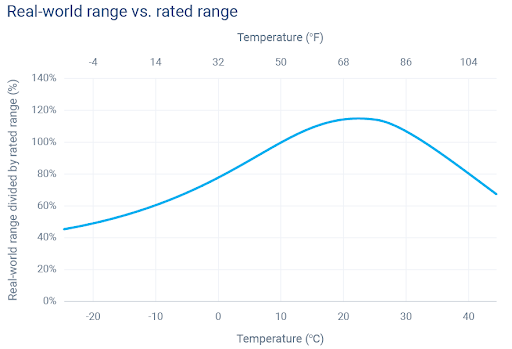
What Is Rated Range?
Rated range, often referred to as EPA or WLTP range depending on region, is the manufacturer-quoted number that estimates how far an electric vehicle can travel on a full charge under standardized test conditions. These ratings are useful benchmarks—but they don’t always reflect the true driving experience.
For example, a 2025 Tesla Model 3 Long Range might have a rated range of 358 miles under EPA standards. But in the real world, that number can fluctuate widely based on factors like weather, terrain, driving speed, and accessory use (like air conditioning or heating).
Real-World Range: Influencing Factors
Unlike the lab environment of EPA testing, real-world driving includes unpredictable conditions. Here are the key variables that can affect actual EV range:
| Factor | Impact on Range |
|---|---|
| Driving Speed | Higher speeds = greater energy consumption |
| Terrain | Hills and elevation changes increase load |
| Temperature | Cold weather reduces battery efficiency |
| HVAC Usage | Heating and A/C can significantly drain the battery |
| Payload & Passengers | More weight = lower range |
| Tire Pressure & Type | Improper or inefficient tires lower efficiency |
| Regenerative Braking Usage | Maximizes range in city driving |
Data: Rated vs Real-World Driving
Recent studies by EV database aggregators like EV-Database.org and real-world testing outlets such as Edmunds or InsideEVs reveal consistent patterns: most EVs deliver between 85%–95% of their rated range in typical conditions, and sometimes more in city driving thanks to regenerative braking.
For example:
| EV Model | EPA Rated Range | Avg Real-World Range | % of Rated |
|---|---|---|---|
| Tesla Model Y Long Range | 330 miles | 310 miles | 94% |
| Hyundai IONIQ 6 SE RWD | 361 miles | 325 miles | 90% |
| Ford Mustang Mach-E RWD | 312 miles | 280 miles | 89% |
| Chevrolet Bolt EUV | 247 miles | 225 miles | 91% |
These real-world figures show that while no EV is perfect, the gap between rated and real-world performance is narrower than most assume.
EV Software Gets Smarter
Modern EVs are also far better at communicating real-time range estimates. Adaptive range prediction uses GPS, traffic data, and even weather forecasts to give a dynamic estimate of remaining miles, making it easier to trust your dashboard.
In other words, the car doesn’t just tell you how far it can go—it tells you how far it can go today, right now, based on actual conditions.
The Psychology of EV Range Anxiety: Fear vs Fact

It’s Not Just About Distance—It’s About Trust
EV range anxiety is less about actual mileage and more about emotional assurance. Unlike the straightforward refueling of a gasoline car, electric driving introduces unfamiliar elements: charge curves, kilowatts, connector types, and station availability. These unknowns contribute to uncertainty, which often manifests as fear—even when the numbers say you’re safe.
A 2024 survey by the American Automobile Association (AAA) found that 58% of non-EV owners cited “range anxiety” as a key barrier to purchase, even though 90% of U.S. drivers travel less than 40 miles per day. That’s well within the range of even entry-level EVs.
This disconnect suggests the issue isn’t one of range—it’s one of perception and confidence.
Cognitive Bias and the ‘What If’ Scenario
Range anxiety thrives on “what if” thinking:
- What if I can’t find a charger in time?
- What if the charger is broken or full?
- What if my trip takes longer than expected?
These scenarios trigger loss aversion, a psychological bias where the fear of negative outcomes outweighs the likelihood of positive ones. Despite planning tools, fast-charging networks, and vehicle range buffers, drivers overestimate risk and underestimate infrastructure resilience.
The Role of Experience
Interestingly, range anxiety tends to disappear with regular use. Studies by EV automakers such as Nissan, Hyundai, and Tesla show that after just one month of ownership, most drivers no longer experience significant anxiety over range. First-hand experience replaces assumption with understanding.
One real-world example: A 2023 Hyundai IONIQ 5 owner in rural Oregon reported switching from a gas SUV and feeling “nervous at first,” but quickly adjusted after discovering nearby Level 2 chargers and learning how much regenerative braking recovers energy in daily commutes.
Designing for Psychological Reassurance
EV manufacturers are now designing UIs and features not just for function, but for psychological comfort. This includes:
- Battery buffers that reserve extra miles as a safety net
- Route planners that auto-suggest charging stops along your journey
- Real-time station availability and charger health data
- Gamification like Tesla’s trip efficiency summaries to encourage smart driving
These tools don’t just solve problems—they prevent worry from forming in the first place.
Top EVs with the Longest Real-World Range in 2025

When it comes to easing EV range anxiety, choosing a vehicle with excellent real-world range is a powerful first step. While many EVs boast high EPA ratings, not all deliver equally in daily driving conditions. Here’s a breakdown of the top-performing electric cars in 2025 based on verified real-world range tests.
Real-World Long-Range EV Leaders (2025)
| EV Model | Battery Capacity (kWh) | EPA Rated Range | Avg Real-World Range | Max DC Fast Charging Speed |
|---|---|---|---|---|
| Lucid Air Grand Touring | 112 kWh | 516 miles | ~475 miles | 300 kW |
| Tesla Model S Long Range | 100 kWh | 405 miles | ~385 miles | 250 kW |
| Hyundai IONIQ 6 SE RWD | 77.4 kWh | 361 miles | ~325 miles | 235 kW |
| Mercedes-Benz EQS 450+ | 108 kWh | 350 miles | ~330 miles | 200 kW |
| BMW iX xDrive50 | 111.5 kWh | 324 miles | ~305 miles | 195 kW |
| Rivian R1T Dual-Motor Large Pack | 135 kWh | 352 miles | ~310 miles | 220 kW |
Key Takeaways:
- Lucid and Tesla dominate in long-distance capability with real-world numbers that exceed 400 miles.
- Hyundai’s IONIQ 6 is a standout in efficiency—offering impressive range from a smaller battery.
- German luxury EVs like the EQS and iX balance range with refinement, appealing to comfort-focused drivers.
- Rivian shows that even rugged EV trucks are no longer range-limited.
Why Real-World Range Matters More Than EPA Labels
These real-world results demonstrate the importance of evaluating range beyond EPA numbers. Factors like battery conditioning, drivetrain efficiency, thermal management, and even vehicle aerodynamics affect how an EV performs on the road.
Many automakers now offer range calculators on their websites, allowing users to simulate real-world driving based on speed, temperature, and load. This transparency helps buyers make informed choices and reduces surprises.
EV Charging Infrastructure: The Cure for Range Anxiety?
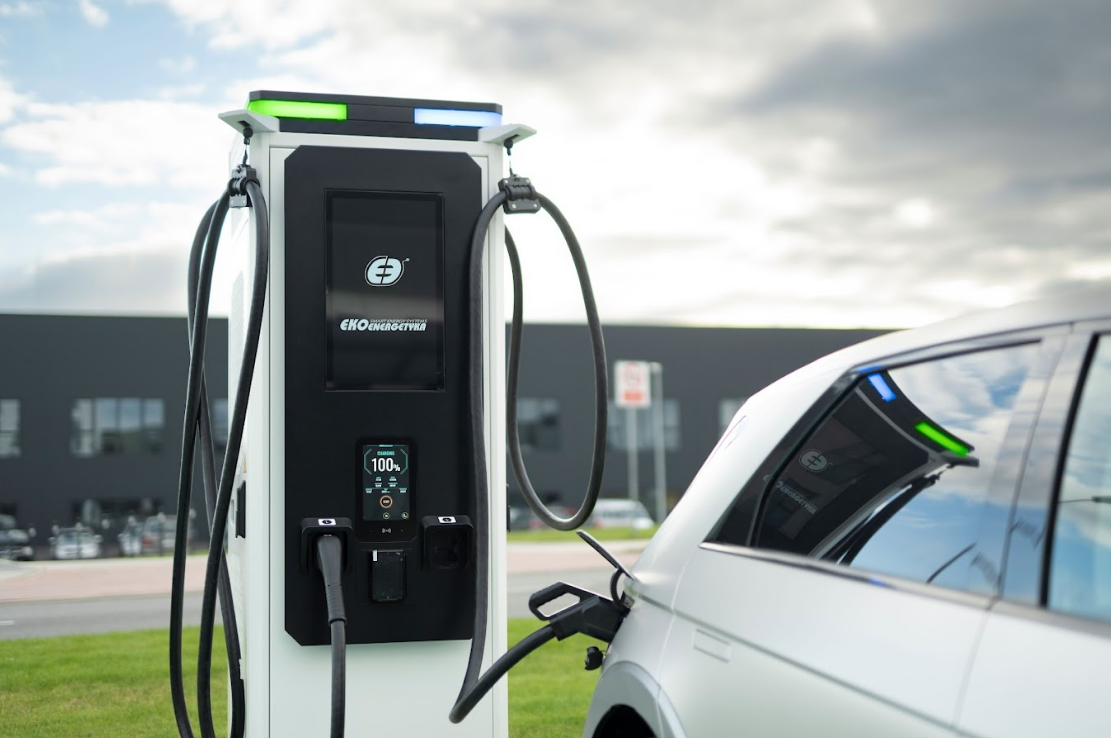
No matter how long your EV’s range is, confidence on the road ultimately depends on one thing: the availability and reliability of EV charging stations. A well-developed infrastructure eliminates the “what ifs” of EV driving—especially on long trips or in rural areas.
How Charging Infrastructure Impacts EV Range Anxiety
A dense, fast, and accessible charging network reduces uncertainty in several ways:
- Shorter distances between chargers mean fewer worries about running low.
- High-speed (DC fast) charging reduces downtime and makes long-distance trips practical.
- Accurate, real-time charger status builds trust by showing whether a charger is available or out of service.
- Integration with vehicle navigation systems allows automatic route planning with charge stops included.
EV drivers are more likely to feel at ease when charging feels as predictable as refueling a gas car.
Global Comparison of EV Charging Infrastructure (2025)
| Country/Region | Public Chargers per 100k People | Fast Chargers (% of Total) | Avg Charging Speed (DC) | Network Integration Rating |
|---|---|---|---|---|
| Netherlands | 643 | 18% | 150 kW | Excellent |
| South Korea | 450 | 60% | 180 kW | Very Good |
| United States | 240 | 35% | 150 kW | Good |
| China | 370 | 55% | 180 kW | Excellent |
| Norway | 520 | 40% | 175 kW | Excellent |
| Indonesia | 22 | 15% | 100 kW | Developing |
Key Insights:
- The Netherlands leads in charger density, making EVs convenient even in small towns.
- South Korea and China dominate in fast-charger availability, supporting rapid charging across urban and highway networks.
- Norway combines density and performance—contributing to its world-leading EV adoption.
- Indonesia is in the early stages of infrastructure rollout, with expansion plans underway.
Charging Apps and Navigation Integration
Modern EVs now work in tandem with charging apps and built-in navigation features to streamline the charging experience. Features include:
- PlugShare, ChargePoint, ABetterRouteplanner (ABRP) integration
- Battery preconditioning before fast charging to reduce wait time
- Dynamic route updates when chargers are offline or crowded
As charging becomes smarter and more ubiquitous, EV range anxiety fades—not just because of range, but because of reliable access.
EV Driving Habits That Make or Break Your Real-World Range
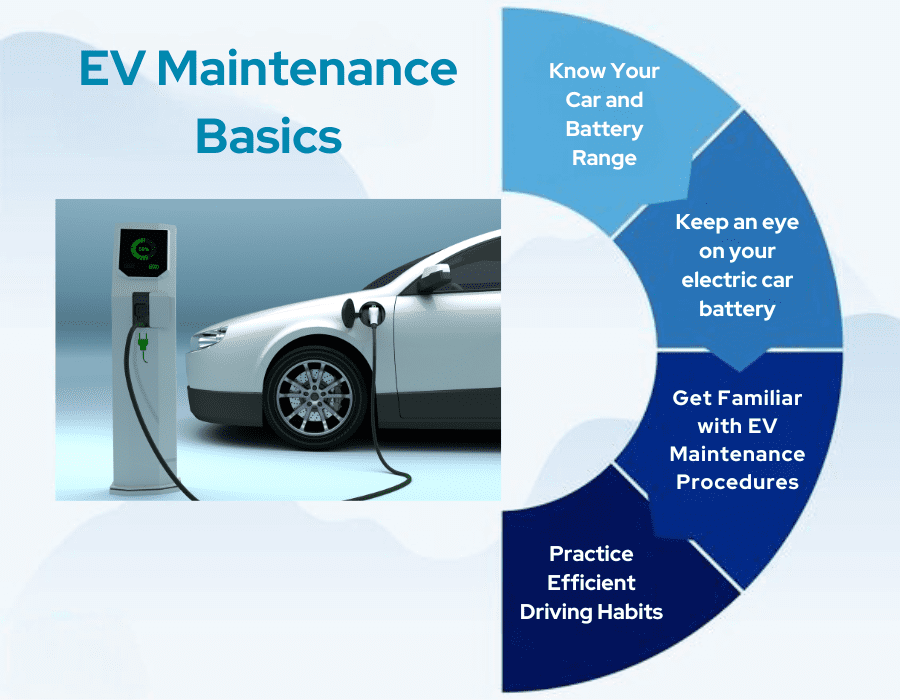
While EV technology has improved dramatically, how you drive still plays a major role in how far you’ll go on a single charge. Even with a well-developed charging network and a long-range EV, poor driving habits can quickly bring range anxiety back into the picture.
Driving Behaviors That Drain EV Battery Faster
Understanding and avoiding these common habits can preserve your EV’s range:
- Hard Acceleration & Braking: Aggressive starts and stops use more energy. Smooth acceleration and regenerative braking help conserve it.
- Highway Speeds: Driving over 70 mph dramatically increases aerodynamic drag, reducing range by up to 30%.
- Overuse of HVAC: Heating and air conditioning can draw significant power, especially in extreme climates.
- Driving Uphill or Towing: These conditions increase load on the battery, requiring more energy output.
- Unnecessary Idling (while ON): EVs don’t burn fuel while idle, but leaving the car on with systems running still drains the battery.
Efficiency Tips to Maximize Your EV Range
Here’s a comparison table showing real-world impact of specific driving habits:
| Driving Behavior | Impact on Range | Recommended Practice |
|---|---|---|
| Aggressive acceleration | -10% to -20% | Accelerate smoothly, use Eco Mode |
| Driving above 75 mph | -15% to -30% | Stay between 55–65 mph for optimal range |
| Full HVAC use in extreme weather | -10% to -25% | Use seat heaters, precondition cabin |
| Cold weather driving (<0°C) | -15% to -40% | Warm up while plugged in, use heat pump |
| Constant uphill driving | -20% or more | Use regen downhill, monitor energy usage |
Pro Tip: Learn how to interpret your EV’s real-time energy consumption display—it helps you understand which habits are costing the most range.
Driving Style Apps & Smart Feedback
Many modern EVs and third-party apps now offer driver coaching tools that provide:
- Feedback on your driving style
- Instant efficiency scores
- Trip-based energy analytics
- Recommendations to extend range
Some EVs even gamify efficient driving, rewarding you for better energy use. These features not only build awareness but also turn smart driving into a daily habit.
Psychological vs Practical: What EV Range Anxiety Is Really About
At its core, EV range anxiety isn’t just about miles—it’s about mindset. Many drivers fear they’ll get stranded, not because their EV can’t handle the trip, but because they don’t trust it yet. It’s a psychological hurdle rooted in decades of gas-car habits.
Perception vs Reality: Is Range Anxiety Just a Myth?
Let’s break down the contrast between real-world EV data and the average driver’s perception:
| Concern | Driver Perception | Reality |
|---|---|---|
| EVs can’t handle long trips | EV range too short for road trips | 300+ mile EVs exist; chargers along major routes |
| Chargers are hard to find | “What if there’s no station nearby?” | Apps show real-time location & availability |
| Charging takes too long | “I’ll waste hours charging” | Fast chargers give 80% in ~20–30 minutes |
| EVs lose range too fast | “Battery will degrade quickly” | Most EVs retain 80–90% capacity after 8+ years |
| EVs can’t handle cold/hot weather well | “Climate kills range” | Newer models include heat pumps & battery management |
These anxieties are not always irrational, but they’re often based on outdated information or a lack of personal experience with EVs.
The Role of Education and Exposure
Studies show that EV range anxiety decreases significantly after just a few weeks of ownership. Why?
- Real-world driving usually stays well within the vehicle’s range.
- Users learn how and where to charge effectively.
- Features like range estimators, eco modes, and trip planners boost confidence.
- Drivers discover range predictability is better than they assumed.
EV anxiety fades as EV experience grows.
Automaker and Dealership Responsibility
The responsibility doesn’t lie solely with the driver. Manufacturers and dealerships must:
- Provide realistic range estimates based on climate and driving style.
- Train buyers on how to manage and optimize range.
- Promote honest, practical EV education instead of marketing hype.
When range anxiety is approached as a communication and education gap, not just a technical issue, the solution becomes much clearer.
Conclusion: EV Range Anxiety Is Real—But Beatable
EV range anxiety is not a myth—but it’s not an unfixable problem either. For many, it’s a natural response to a new way of driving. But with better battery technology, wider charging infrastructure, smarter driving habits, and realistic expectations, it becomes something you can manage—and eventually, forget.
Today’s EVs offer more range, more intelligence, and more support than ever before. Most drivers discover that range anxiety fades quickly once they gain real-world experience and develop confidence in their EV’s capabilities.
If you’re still on the fence about electric vehicles because of range concerns, don’t let outdated fears hold you back. Look at the data, test drive a few models, understand how you drive, and explore how charging fits into your routine. The transition is not just possible—it’s often easier than expected.
FAQ About EV Range Anxiety vs Real-World Driving
What causes EV range anxiety in drivers?
EV range anxiety is mainly caused by fear of running out of battery before finding a charger. This anxiety often stems from unfamiliarity with EV technology and a lack of experience in real-world driving scenarios.
How accurate are official EV range estimates compared to real-world driving?
Official EV range estimates, such as EPA ratings, provide a baseline, but real-world results vary based on driving habits, climate, and terrain. However, most modern EVs closely match or exceed their rated ranges under typical conditions.
Does EV range anxiety go away over time?
Yes, studies show that EV range anxiety significantly decreases after several weeks of ownership. As drivers become familiar with range management and charging options, their confidence improves.
How do cold and hot weather affect EV range?
Extreme temperatures can reduce EV range due to increased energy use for heating or cooling. However, many EVs now come equipped with thermal management systems and heat pumps to minimize this effect.
What are the best strategies to overcome EV range anxiety?
Planning routes with charging stations, using range estimation tools, maintaining moderate speeds, and owning an EV with sufficient range for your lifestyle are key ways to reduce and overcome EV range anxiety.

